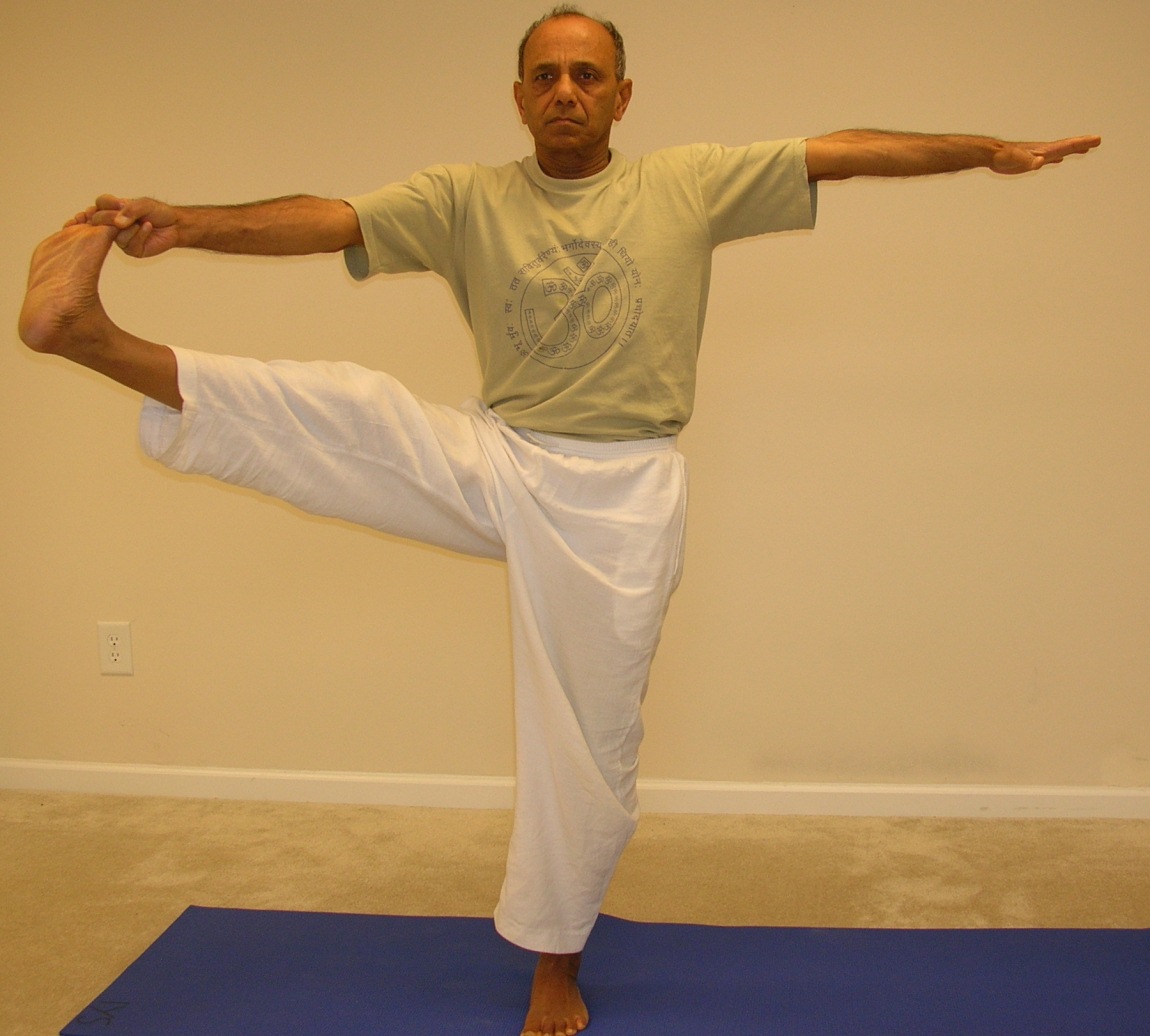Utthita Hasta Padangushthasana ( उत्थितहस्तपादाङ्गुश्ठासन) (Extended hand to big toe pose) is an intermediate level one-leg balancing pose. Like most other standing balancing poses, it develops strength in the legs, focus, concentration, balance and stability.
Step-by-step
- Begin by coming to a standing posture on the mat.
- Shift your weight onto your left foot and press it firmly into the floor. Place your left hand on your hip and slowly bring the right foot up with the knee bent, holding the big toe with the middle and index fingers of the right hand.
- Keeping the left leg grounded, slowly straighten the right leg as much as you comfortably can, keeping the leg straight in front. Try to lift the leg up until it is parallel to the floor or even slightly higher. Tuck the navel in towards the spine, holding the abdominal muscles firm.
- Maintain your gaze fixed at a spot in front.
- If you are not able to stretch the leg straight in front, try to keep it at any angle that feels comfortable.
- Carefully take the right leg out to the right-hand side, turning the head to look over the left shoulder, left hand on left hip. Try to maintain a smooth and even breathing pattern.
- Hold the final pose for five to ten breaths.
- Bring the right leg back in front of you, still raised from the floor. Keeping the navel drawing in gently to support the back, and the front thigh strong, slowly release the hand away from your foot, keeping the leg extended in front of you. Keep both hands on your hips. Try not to lean back.
- Slowly lower the leg and come back to the standing position and relax for a few breaths.
- Repeat the above steps on the other side.
Variations
Using the strap
If you have tight hamstrings or some discomfort in your lower back, and have difficulty straightening the leg while holding the big toe with the hand, you may use a strap wrapped around the sole of the foot. Try to hold the strap as close to the foot as possible while keeping the elbow straight.
Using support of the wall or a chair
If you have trouble maintaining balance, you may place one hand against the wall or on the top of a chair for support. This support will allow you to focus on stretching the leg straighter without fear of losing the balance. As mentioned before, in this variation too, you may like to use the strap if the hamstrings are tight.
Standing head-to-knee variation
Variation 1
In this variation we try to emulate the seated head-to-knee pose (janu-shirshasana) while in the standing leg stretch balance. While holding the foot with both hands and trying to keep the leg straight in front, try to bend over the stretched leg and bring the forehead close to the knee.
Variation 2
In this variation, we place the foot on the top of a chair or any other raised platform (window-sill for example). Try to straighten the knee and then bend over the stretched leg, stretching the arms along the leg, finally holding the sole of the foot with both hands.
Parivritta (revolving) stretch variation
In this variation, we hold the left foot with the right hand and then try to stretch the leg straight. In this position you may either keep the left hand on the hip and stretch is straight behind you. Turn the neck and look over the shoulder behind you. This pose gives a twisting motion to the spine and adds the benefits of the spinal twist to the other benefits of the balancing pose.
Benefits:
- Improves balance, concentration, patience and determination
- Stronger and tighter abdominal muscles
- Stronger legs, especially the thigh quads and hamstrings
- Increases the flexibility of the hamstring and sciatic nerves
- Strengthens the shoulders
- Stretches the lower back
Contraindications
Avoid this pose if you have pain in the lower back or have a leg or ankle injury.

[…] morning, I had great balance poses (!) and felt good about my practice. Afterwards, I spoke a bit with my instructor and relayed the […]